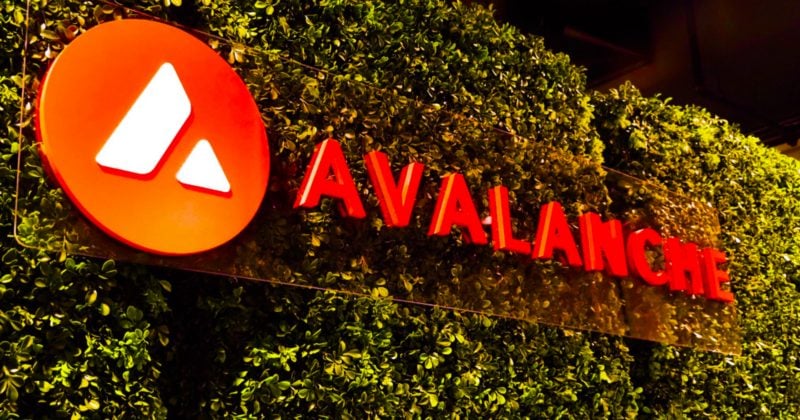Key Takeaways:
I. Avalanche's innovative architecture, featuring subnets and a high-performance consensus mechanism, provides significant scalability advantages.
II. The $250 million investment empowers Avalanche to accelerate development, expand its ecosystem, and compete aggressively in the blockchain market.
III. Navigating regulatory uncertainty and achieving widespread market adoption remain crucial for Avalanche's long-term success.
The Avalanche Foundation has secured a substantial $250 million in a recent funding round, marking a significant milestone for the platform and the broader blockchain industry. Led by prominent investors Galaxy Digital, Dragonfly, and ParaFi Capital, this investment underscores growing confidence in Avalanche's potential to disrupt traditional finance and gaming. This influx of capital comes at a crucial juncture, as the blockchain industry navigates scalability challenges, interoperability hurdles, and evolving regulatory landscapes. This article delves into the strategic implications of this funding, exploring Avalanche's technical advantages, market positioning, and the challenges it faces in its quest to become a leading blockchain platform.
Avalanche's Scalability Solution: Subnets and the Power of Parallel Processing
Avalanche's innovative architecture distinguishes it from traditional blockchain platforms like Ethereum and Solana. Its use of subnets, independent blockchains with customizable parameters, allows for parallel processing of transactions, significantly increasing throughput and reducing latency. This contrasts sharply with Ethereum's single-chain structure, which often suffers from congestion and high transaction fees. Solana, while boasting high throughput, has faced challenges with network stability, highlighting the importance of a robust and reliable architecture like Avalanche's.
Avalanche's consensus mechanism, also called Avalanche, further enhances its performance. This novel approach achieves consensus rapidly, with transaction finality in under two seconds. This speed is crucial for applications requiring real-time responsiveness, such as decentralized exchanges and online gaming. Furthermore, the subnet architecture allows for customized consensus protocols within each subnet, providing flexibility for different use cases.
Interoperability is another key strength of Avalanche. The Avalanche Bridge enables seamless asset transfer between Avalanche and Ethereum, allowing developers to leverage the existing liquidity and user base of the Ethereum ecosystem. This interoperability fosters a more connected blockchain landscape, allowing for cross-chain collaboration and innovation. The ability to create custom bridges to other blockchains through subnets further enhances Avalanche's interoperability potential.
The combination of subnets, a high-performance consensus mechanism, and robust interoperability solutions positions Avalanche as a compelling platform for building decentralized applications. By addressing the scalability and interoperability challenges that hinder many other blockchains, Avalanche offers a more efficient and flexible environment for developers and users.
Strategic Investments: Building a Thriving Community and Attracting Developers
The $250 million investment will significantly accelerate Avalanche's development roadmap. A substantial portion of the funds will be allocated to research and development, enhancing the platform's core technology and exploring new innovations. This includes further development of the Avalanche9000 upgrade, which aims to drastically reduce deployment costs and attract more validators to the network. The funding also enables Avalanche to expand its team, attracting top talent to drive its ambitious goals.
Ecosystem growth is another key focus. The funding will support initiatives to attract developers and projects to the Avalanche platform. This includes grants, hackathons, and other programs designed to incentivize the creation of decentralized applications (dApps) across various sectors, including DeFi, NFTs, and gaming. The Blizzard and Multiverse funds, totaling $510 million, further demonstrate Avalanche's commitment to fostering a thriving ecosystem.
The investment also strengthens Avalanche's competitive position. With increased resources, Avalanche can compete more effectively with established players like Ethereum and Solana, as well as emerging Layer-1 blockchains. The funding allows for more aggressive marketing and outreach efforts, raising awareness of Avalanche's advantages and attracting users to the platform.
While the funding provides a significant boost, it's crucial to acknowledge the inherent volatility of the cryptocurrency market. The success of Avalanche, like any blockchain project, depends on various factors beyond funding, including market sentiment, regulatory developments, and the broader macroeconomic environment. The investment provides a buffer against market fluctuations and enables continued development during periods of uncertainty, but it does not guarantee success.
Avalanche's Future: Balancing Potential with Reality
Despite its strengths and recent funding success, Avalanche faces significant challenges. The regulatory landscape for cryptocurrencies remains uncertain, with evolving regulations and potential government intervention posing a constant threat. Navigating this complex legal environment and ensuring compliance will be crucial for Avalanche's long-term sustainability and mainstream adoption. Proactive engagement with regulatory bodies and a commitment to responsible innovation will be essential for building trust and fostering a positive regulatory environment.
Achieving widespread market adoption is another critical hurdle. While attracting developers is essential, the ultimate success of Avalanche hinges on its ability to onboard a large and active user base. This requires building a compelling ecosystem of dApps that offer real-world value and cater to a broad audience. Fostering community engagement, providing user-friendly tools and resources, and demonstrating the practical applications of Avalanche's technology will be crucial for driving user adoption and achieving mainstream recognition.
Conclusion: Avalanche's $250 Million Investment – A Catalyst for Blockchain Innovation?
Avalanche's $250 million funding round represents a significant inflection point for the platform. This substantial investment, coupled with its innovative technology and ambitious vision, positions Avalanche as a strong contender in the blockchain space. However, the path to market leadership is fraught with challenges, including navigating regulatory uncertainties, competing with established platforms, and achieving widespread user adoption. The funding provides a crucial runway, but the ultimate success of Avalanche will depend on its ability to execute its strategy effectively, adapt to the evolving market dynamics, and deliver on its promise of a truly scalable and interoperable platform for the decentralized future.
----------
Further Reads
I. https://cryptomus.com/blog/solana-vs-avalanche-a-complete-comparisonSolana (SOL) vs Avalanche (AVAX): Complete Comparison
II. https://medium.com/coinmonks/avalanche-vs-solana-which-one-is-better-avax-and-sol-comparison-39009138dab0Avalanche vs Solana — Which One Is Better? AVAX and SOL Comparison | by StealthEX.io | Coinmonks | Medium
III. https://www.investopedia.com/what-are-layer-1-and-layer-2-blockchain-scaling-solutions-7104877Layer 1 vs. Layer 2: The Difference Between Blockchain Scaling Solutions

